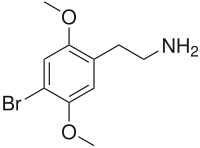
Photo from wikipedia
BACKGROUND Remarkable progress has been made for low-dose CT reconstruction tasks by applying deep learning techniques. However, establishing an intrinsic link between deep learning techniques and CT texture preservation is… Click to show full abstract
BACKGROUND Remarkable progress has been made for low-dose CT reconstruction tasks by applying deep learning techniques. However, establishing an intrinsic link between deep learning techniques and CT texture preservation is still one of the significant challenges for researchers to further improve the effect of low dose CT reconstruction. Purpose Most of the existing deep learning-based low dose CT reconstruction methods are derived from popular frameworks, and most models focus on the image domain. Even few existing methods start with dual domains (sinogram and image) by considering the processing of the data itself, the final performances are limited due to the lack of perception of textures. With this in mind, we propose a method for texture perception on dual domains, so that the reconstruction process can be uniformly driven by visual effects. METHODS The proposed method involves the processing of two domains: the sinogram domain and the image domain. For the sinogram domain, we have designed a novel dilated residual network (S-DRN) which aims to increase the receptive field to obtain multi-scale information. For the image domain, we propose a self attention (SA) residual encoder&decoder network (SRED-Net) as the denoising network for obtaining much acceptable edges and textures. In addition, the composite loss function composed of the feature loss constructed by the proposed boundary and texture feature aware network (BTFAN) and the mean square error (MSE) can obtain a higher image quality while retaining more details and fewer artifacts, thereby obtaining better visual image quality. RESULTS The proposed method was validated using both the AAPM-Mayo clinic low-dose CT datasets and a real clinic data. Experimental results demonstrated that the new method has achieved the state-of-the-art performance on objective indicators and visual metrics in terms of denoising and texture restoration. CONCLUSIONS Compared with single-domain or existing dual-domain processing strategies, the proposed texture-aware dual domain mapping network(TADDM-Net) can much better improve the visual effect of reconstructed CT images. Meantime, we also provide much intuitive evidence in terms of model interpretability. This article is protected by copyright. All rights reserved.
Journal Title: Medical physics
Year Published: 2022
Link to full text (if available)
Share on Social Media: Sign Up to like & get
recommendations!